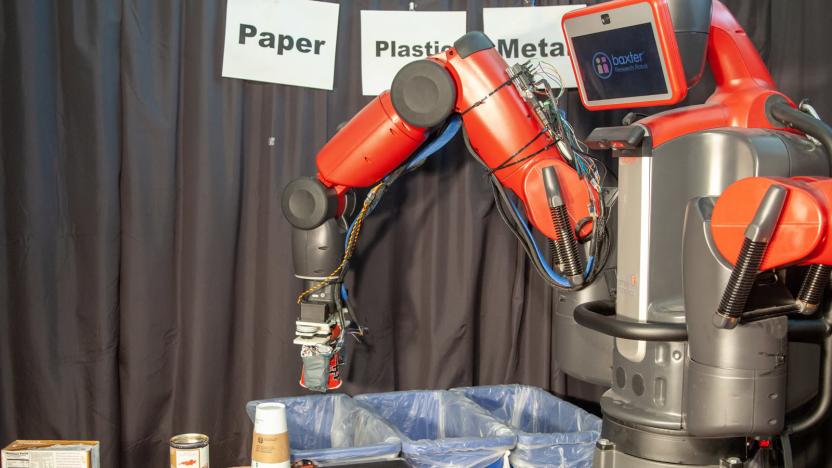auxetics
Latest

Recycling robot can sort paper and plastic by touch
It can be a pain for workers to sort recycling, both because of the safety and the sheer monotony of it. But how do you get robots to do the job when they can't always tell the difference between a can and a cardboard tube? For MIT CSAIL, it's simple: give the robots a sense of touch. Its researchers have developed a recycling robot, RoCycle, that uses sensors in its hand to determine the nature of an item and sort it accordingly. A strain sensor gauges an object's size, while two pressure sensors determine how squishy that object may be, whether it's easily-crushed paper or more rigid plastic. It can even detect the presence of metal, since the sensors are conductive.

Material with eagle-like grasp could lead to grippier robot hands
Most materials bulge out when you squeeze them, pushing the energy outside. But that's not always what you want -- wouldn't it sometimes be better for them to collapse and hold the energy inside? These exotic materials (known as auxetics) already exist on a basic level, but they tend to be so fragile that you can only use them once. A team of UK scientists may have a better way: they've designed auxetic materials that can repeatedly collapse and store energy many times without breaking or expending additional energy, grabbing on much like an eagle's talon.
